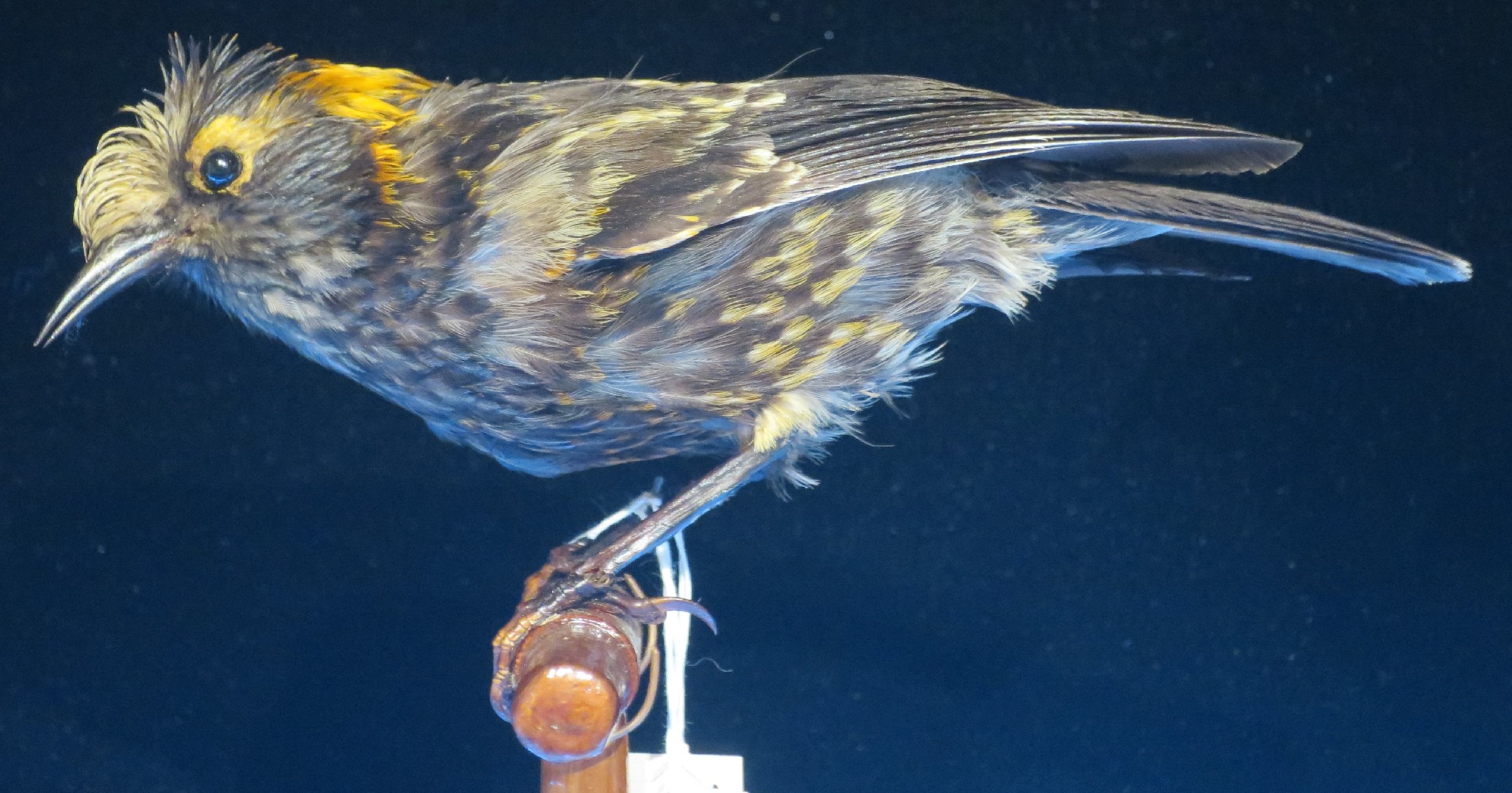Akohekohe
A species of Akohekohe Scientific name : Palmeria dolei Genus : Akohekohe
Akohekohe, A species of Akohekohe
Botanical name: Palmeria dolei
Genus: Akohekohe
Content
Description General Info
Description
The ʻākohekohe is the largest honeycreeper on Maui, at 6.5 to 7 inches (17 to 18 cm) in length. The adults are a glossy black with whitish feathers and stripes going down its side. The underparts are whitish black while the top has orange feathers sticking from wings. The feathers behind the eyes are a reddish color, and have a stream of cream colored feathers coming from the eyes. One of the things that most people recognize about this bird is its whitish gold colored feather crest on its head. The younger birds are brownish black and they do not have the orange feathers of the parents. The legs and bills are a blackish color. 
Size
13 - 23 cm
Life Expectancy
5-9 years
Nest Placement
Tree
Feeding Habits
Akohekohe's diet is diverse, consisting primarily of nectar, along with caterpillars, flies, spiders, and various insects found in foliage. Its foraging behavior includes probing flowers and leaves. Unique adaptations, such as a specialized tongue, facilitate nectar feeding.
Habitat
The habitat of akohekohe is the wet and mesic montane rainforests, typically with a canopy of 'öhi‘a trees and other native flora like ‘ölapa and koa. Conditions include steep terrain, frequent clouds and mist, influenced by northeasterly trade winds. These rainforests lie at elevations of 1,500 to 2,000 meters, experiencing high rainfall and temperatures of 8 to 14°C, with colder nights in winter.
Dite type
Frugivorous
General Info
Feeding Habits
Bird food type

Fruit
Distribution Area
Its natural habitat is wet forests dominated by koa (Acacia koa) and ʻōhiʻa lehua (Metrosideros polymorpha) on the windward side of Haleakalā at elevations of 4,200 to 7,100 feet (1,300 to 2,200 m). During a search for the species in the east Maui forests, there were a record of 415 observations over an area of 11,000 acres (45 km) and at elevations from 4,200 to 7,100 feet (1,300 to 2,200 m) above sea level. It has been estimated that there are a total of 3,800 ʻākohekohe left on Maui in two populations separated by the Koʻolau Gap. 
Species Status
According to the Federal Endangered Species Act, this bird is protected by law along with its habitat. The bird was included in the act in March 1967. It was also a part of many other documents including the Maui-Molokai Forest Bird Recovery Plan in 1967, by the Fish and Wildlife Service. It will serve as a guideline to protect the indigenous life of Maui and Molokaʻi. The final recovery plan in 1984 continues the last, keeping eyes on the species and eradicating any ungulates that are introduced into the area that can harm and or disturb the ʻākohekohe and other native forest birds in Maui's forests. 
